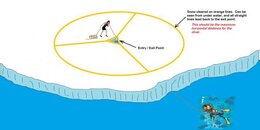dive_turkey
Contributor
Invited to go ice diving with my LDS owner/PADI instructor and a small group of DM's. Any equipment recommendations or otherwise helpful advice?
I'll be completing my advanced shortly.
My equipment currently includes:
Mares Techfit Drysuit
4th Element Halo 3D undergarment
Santi 200g booties
Apeks FSR/XTX200/XTX50
Zeagle Ranger LTD
Thinking of upgrading to a Waterproof 10mm hood and dry gloves.
I realize my dive experience will come under fire, and that's alright. I want honest opinions.
The only other person going that has not been ice diving before is my regular dive buddy who will also be attending in a learning capacity. He has around 160 dives.
I'll be completing my advanced shortly.
My equipment currently includes:
Mares Techfit Drysuit
4th Element Halo 3D undergarment
Santi 200g booties
Apeks FSR/XTX200/XTX50
Zeagle Ranger LTD
Thinking of upgrading to a Waterproof 10mm hood and dry gloves.
I realize my dive experience will come under fire, and that's alright. I want honest opinions.
The only other person going that has not been ice diving before is my regular dive buddy who will also be attending in a learning capacity. He has around 160 dives.





